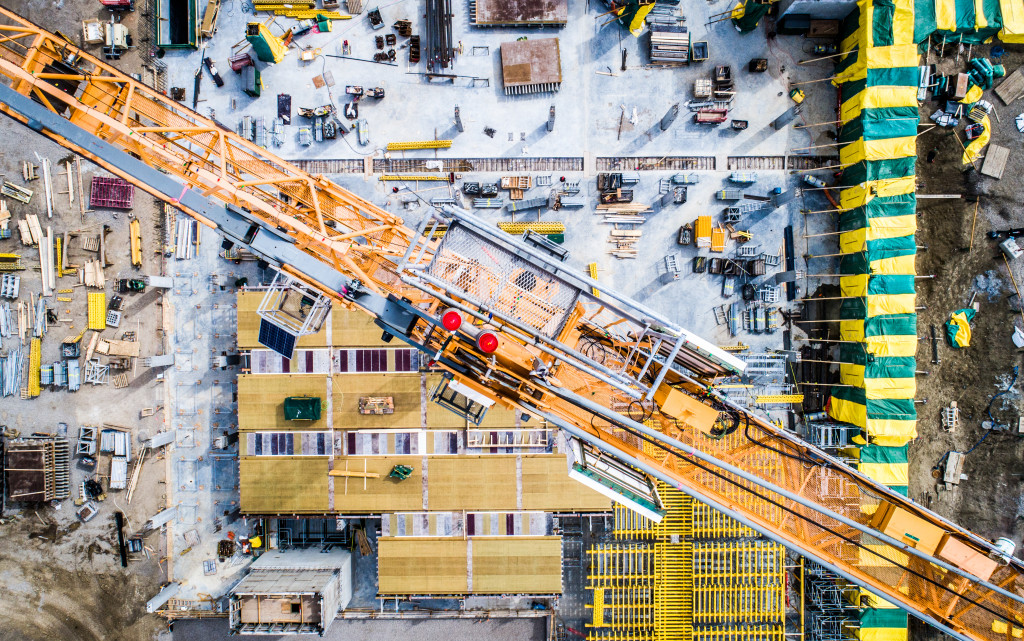- Research and plan sustainable construction practices and materials to reduce environmental impact.
- Incorporate energy-efficient design elements, such as natural light and ventilation, to reduce energy consumption.
- Use recycled materials, sustainable wood, and energy-efficient products for the project.
- Implement efficient stormwater management systems such as permeable pavements and rain gardens.
- Regularly inspect and repair the building, and replace materials when necessary with sustainable alternatives.
As businesses become more aware of the impact they have on the environment, it’s no surprise that sustainable construction practices are becoming more popular. Sustainable construction is not only great for the environment, but it also saves businesses money in the long run. Here are some steps for planning and executing a sustainable construction project.
Step 1: Research and Planning
Before starting any construction project, it’s essential to research and plan. Research sustainable construction practices and materials that can be incorporated into your project. Here are some more specific things to consider:
Materials
Choosing suitable materials is one of the most critical aspects of any sustainable construction project. The materials used for the project should be environmentally friendly and have a low environmental impact. Consider using recycled materials, sustainable wood, and energy-efficient products to help reduce the overall carbon footprint.
Design
Good sustainable design doesn’t just incorporate sustainable materials. It also involves design elements that make the building more energy-efficient, such as using natural light and ventilation and reducing the amount of energy needed to run the building.
Stormwater Management
Good stormwater management is an important component of sustainable construction. Stormwater runoff can cause severe environmental damage. To reduce water damage and the risk of pollution, it’s essential to make sure that an efficient stormwater management system is in place. This can include systems such as permeable pavements, rain gardens, and green roofs.

Step 2: Construction
During the construction phase, it’s important to keep sustainability in mind. Use the materials and design elements you researched during the planning phase to make sure that your construction project is as effective as possible. Here are some sustainable construction practices.
Reducing Waste
One way of reducing waste during a sustainable construction project is to avoid over-ordering or using materials. This can be done by carefully calculating the amount of material needed for the project and ordering just enough to cover it. Doing this eliminates the need for excess material that would otherwise end up in landfills.
Energy Efficiency
Using energy-efficient techniques and materials is an integral part of sustainable construction. This includes using triple-paned windows to reduce heat transfer, LED lighting, and solar energy systems. Making sure that the building is designed to make the most efficient use of energy will help save money in the long run.
Carefully Planned Lifts
Carefully planned lifts are an essential part of sustainable construction projects. Lifts are used to move materials between floors or to other construction site features. To reduce energy consumption and environmental impact, these lifts should be planned out in advance and limited as much as possible. This will help lower fuel emissions from the lifts and reduce waste associated with transportation.

Step 3: Maintenance and Life Cycle
Maintaining the building for the long run is crucial to ensuring its sustainability. Regular maintenance and servicing of the building’s systems can help to extend its lifespan and reduce the overall environmental impact. Here are some tips:
Monitor Energy Usage
Keeping an eye on energy usage and making sure that the building is running efficiently is vital for maintaining a sustainable construction project. Regularly monitoring energy consumption can help to identify areas where improvements can be made.
Inspect and Repair Regularly
Regular inspections and repairs are essential to keeping a building in good shape. Keeping an eye on the condition of the building can help identify potential problems before they become major issues. This includes inspecting the roof for leaks, checking all electrical systems, and making sure that the plumbing is functioning correctly.
Replace Materials When Necessary
Due to wear and tear, replacing materials in the building may be necessary. When this happens, make sure to opt for sustainable materials and practices so that the building can remain as environmentally friendly as possible.
Sustainable construction practices are the future, and it’s essential that businesses start to incorporate these practices into their projects. By following the steps mentioned above, companies can plan and execute sustainable construction projects that not only benefit the environment but also save money in the long run. The key is to research, plan, and choose the right materials, design, and construction practices. By doing so, businesses can create buildings that are both sustainable and good for the bottom line.

